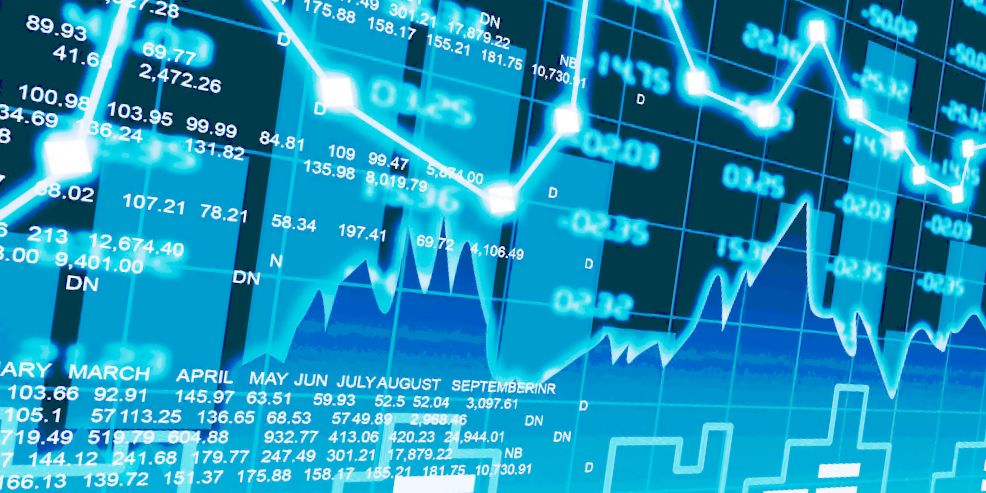Contents
This pattern is suitable for intraday trading on 5, 15 or 30-minute timeframes and is one of the best figures for day trading. This 30-minute BTCUSD chart is an example of the formation of an ascending triangle. The appearance of triangle patterns in the chart makes it difficult to predict the price movement, since there are three types of this pattern. Chart patterns are important in trading because they are closely intertwined with the psychology of price action.
Best day trading patterns for beginners?
The best patterns for day trading include the triangle, flag, pennant, wedge, and bullish hammer patterns.
ᏟᖴᎠs are complex instruments and come with a high risk of losing money rapidly due to leverage. You should consider whether you understand how ᏟᖴᎠs work and whether you can afford to take the high risk of losing your money. 77.93% of retail investor accounts lose money when trading ᏟᖴᎠs with this provider. Thankfully, unlike a lot of topics related to investing, the tools for forex trading this one is a bit more visual and intuitive—no overly complex formulas, no number crunching—but plenty of candles and interesting shapes. Study hard, get a demo account, and you’ll be well on your way to success. If you do not agree with any term or provision of our Terms and Conditions you should not use our Site, Services, Content or Information.
What is the best time of day to buy stocks?
This reiterates that consistently making money trading stocks is not easy. Day Trading is a high risk activity and can result in the loss of your entire investment. You can see an example of the formation of this pattern in the 30-minute GBPAUD chart. The picture below shows that when the trading channel windsor broker review narrowed and the wedge pattern formed, there was an impulse breakdown of the price to the level of the formation height of this pattern. The descending triangle pattern is the opposite of the ascending triangle pattern. In this figure, there is a clear support level and a smooth decrease in highs.
There are many candlestick patterns that indicate opportunities in the market. Some indicate the balance between buying and selling pressure, while others identify continuation patterns or market indecision. Seasoned traders understand the mechanics behind the patterns and will give the patterns some leeway in order to play out. The key is to recognize patterns quicker than the next guy in order to take a position before the full transparency is revealed. Chart patterns are linear throughout all time frames, which mean that a pattern that forms on a 5-minute chart performs the same way it would on a daily time frame chart.
- Quotes were prevented from moving below the support level several times.
- Notice how the move up never had a strong pullback to challenge the primary trend.
- Vice versa, if the price forms lower highs and lower lows, it is a downtrend.
The tendencies should never be used as a strategy or trade signal on their own. The signal to enter the trade appears after the breakdown of the pennant boundary in the direction of the main trend. There’s no one-size-fits-all answer here—most traders will spend an hour or two trading, but nothing is stopping you from trading for hours on end. However, seeing as how it is stressful and requires your full attention, this isn’t recommended—at least not in the beginning. A double top indicates that an upward breakout was unsuccessful, hence the reversal that usually occurs afterwards. Graphic representations of the head and shoulders chart pattern.
Technical Analysis Guide
Knowing how to interpret and trade triangles is a good skill to have when these types of patterns occur. They are common, but won’t occur every day in every investment. Day traders will typically require a broader range of strategies than only trading triangles.
When it comes to day trading, there are certain patterns that appear based on the time of day. In any trading terminal, you can use different ways to analyze the market with the help of technical analysis. It includes sustainable techniques and tools that allow you to analyze the current situation on the chart. Without that sort of rational, shatterproof discipline, you can just as easily lose all your gains with a few bad trades.
Bearish Example of a Morning Consolidation
As a trader, you are literally bombarded with hundreds, if not thousands of trade opportunities on a daily basis. You can use a number of methods to dwindle this enormous list down, including volume requirements, volatility, and float. For example, if your account is $36,500, you can risk up to $365 per trade.

If the price is in an overall uptrend, you might expect the price to move higher eventually, even if it initially breaks out below the triangle. You can also use momentum indicators, volume, and other market data to get a sense of likely scenarios. False breakouts are the main problem traders face when trading triangles, or any other chart pattern. A false breakout is when the price moves out of the triangle, signaling a breakout, but then reverses course and may even break out the other side of the triangle. For instance, suppose a triangle forms and a trader believes that the price will eventually break out to the upside. In this case, they can buy near triangle support , instead of waiting for the breakout.
What is a chart pattern?
So, BTC begins to tumble, breaking the opening level at that marked the initial impulse move upwards. A day trader might have taken this breakout as a sign to go short. If so, the trader could have ridden the market down for the next several hours as BTC continued coasting downward following its steep drop. When you’re day trading the markets, you’re looking to take advantage of micro supply and demand levels. Longer-term investors call this “market noise,” or fluctuations that may have no significance in the larger fundamental scale of things.
It often appears after a strong move in the chart and shows that the bears have mistaken a small correction for a reversal, and some sellers are opening positions. At some point, the buyers fight again, the channel boundary is broken, and the trend continues in the old direction. To enter the trade, the fact of the breakdown of the borders of the flag in the direction of the main trend is used. The most important thing to keep in mind when discussing this question is the pattern day trading rule.

Only enter after a confident consolidation of the price and an increase in volumes. Stop loss in this case should be set above or below the broken level, depending on the type of formation. In the 15-minute BTCUSD chart below, there is a fully formed classic head and shoulders aafx trading broker introduction pattern. Strong impulse waves don’t always determine the direction of the market. Sometimes they’re followed by abrupt reversals as in the example below. You are entering trades later in the day and there is a risk for volatility to dry up after the first hour of trading.
Common Day Trading Patterns
The direction of the triangle points the way – an ascending triangle points toward the continuation of an uptrend while a descending triangle points toward the continuation of a downtrend. The lines that form trading triangle patterns are visual guides. As long as a trader’s lines help them visualize profitable trends, then they’re drawing them correctly.
A red candlestick means the price closed lower than the open, while a green candlestick means the price closer higher than the open. The pattern will follow either a strong gap or a series of bars moving in one direction. This ensures you will be in a stock with volatility, which is key to turning a profit day trading. Placing a stop-loss just below the triangle reduces the amount of risk on the trade.
. Triple Top Pattern (77.59%)
Traders may wish to add additional criteria to their exit plan, such as exiting a trade if the price starts trending against their position. If the price breaks below triangle support , then a short trade is initiated with a stop-loss orderplaced above a recent swing high, or just above triangle resistance . Seasonal patterns could refer to patterns in specific stocks or broad patterns across the market. Some businesses experience seasonal cycles, such as a cruise company that sells more tickets during the holidays, and their stocks may reflect that. Other traders watch for broad seasonal patterns, such as the idea that a trader should “sell in May and go away” until November.
A good rule of thumb is that the first drop should be a drop of 10% to 20%, while the second drop should be roughly the same—it shouldn’t vary more than 3 or 4% from the first low. Once a stock’s price breaches either of these lines, there is a strong likelihood that you’re seeing the beginning of a breakout. However, don’t be fooled—if a stock crosses one of these lines and sees a price correction in a matter of moments, you’re not actually seeing a breakout. As you can see, Japanese candlesticks are quite different when compared to your regular old bar chart.
What is the most profitable trading pattern?
The head and shoulders patterns are statistically the most accurate of the price action patterns, reaching their projected target almost 85% of the time. The regular head and shoulders pattern is defined by two swing highs (the shoulders) with a higher high (the head) between them.
Trades can place a stop-loss under the lip, which should be a new support level. A double top indicates the ceiling on a stock’s price as it peaks out twice at the top of the range. Buyers give up after the second top as sellers get nervous and take profits while short-sellers step into the fray. Double top patterns are the opposite of double bottoms and resemble an “M” shape.
They form after a very strong initial parabolic price push higher or lower . In the 15 minutes following it, however, you see strong price rejection at above 4440. But ultimately, the price couldn’t penetrate the levels above the previous bar.
They’re simply better at giving you more information even at a glance. A bar chart tells you what the closing price was—a candlestick tells you the same thing, plus the open, high, and low, as well as if the open was higher than the close. An aggressive trader may want to enter on the initial break of the flat top of the ascending triangle. Because pennants are triangles, there are more various probabilities based on the type of triangle that develops. For example, the symmetrical triangle has a neutral bias in the direction of the breakout.

Comentários